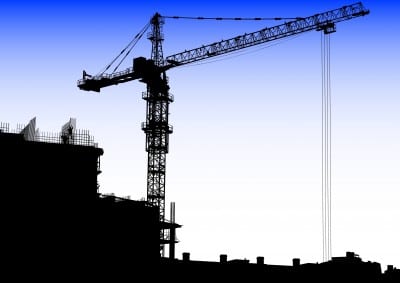The Associated General Contractors of America released a bit of bright news this week, among the gloomy forecasts Americans have grown accustomed to. According to the industry group, construction spending increased 1.4 percent from July to August, and was up 0.9 percent compared to August 2010. While those numbers obviously aren’t anything that herald the end of the construction industry’s doldrums, they’re certainly positive signs.
 Spending inched up to $799.1 billion in August, compared to $788.3 billion in July and $791.7 billion a year ago. Most interesting, however, was where the spending came from.
Spending inched up to $799.1 billion in August, compared to $788.3 billion in July and $791.7 billion a year ago. Most interesting, however, was where the spending came from.
Private sector construction spending grew by 0.4 percent between July and August, from $508.9 billion to $511.0 billion, an increase of 5.6 percent over last year. Public construction spending, however, grew from $279.4 billion in July to $288.2 billion in August, a 3.1 percent increase, but remains down by 6.3 percent compared to 2010.
So, private spending was basically flat over the summer, but had grown nearly 6 percent since last year, and public spending grew over the summer, but was down more than 6 percent over last year. These numbers support what we’ve seen anecdotally in the larger economy. Housing starts (private construction) are up in some of the better markets around the country, but the overall picture is much bleaker. Additionally, public construction spending, while still rising, is beginning to wane, as both local and federal governments cut spending, and as stimulus package programs from 2009 wind down.
According to the AGC of America, power construction and heath care facilities have supported most of the growth.
Spending on power construction experienced the largest private sector increase (25.9 percent), while spending on lodging declined by more than any other sector of private construction (31.7 percent). In contrast, publicly funded health care construction activity grew by 12.8 percent while investments in the two largest public segments – highway and street and educational construction – fell 4.5 percent and 4.0 percent, respectively.
While positive numbers are always absolutely a good thing, it would be more comforting to see construction spending in core areas – housing and infrastructure – driving this bump. As we’ve talked about before, President Obama’s jobs bill invests deeply in both educational and infrastructure spending, but, of course, relies on taxes and cuts elsewhere to pay for it. The housing market is far more tricky. With a huge glut of unfilled houses around the country, it’s going to take a lot more than government action to get it going again.

Hopefully it’s just the beginning!